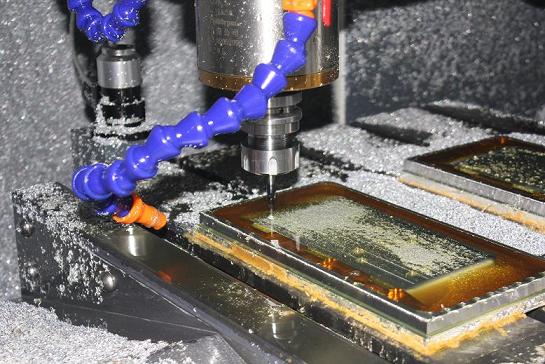Get in touch.
Dear,I will reply in 12 hours. All your message are protected!
Rapid Prototyping Services, Professional manufacturer of CNC Prototyping and 3D Prototyping in China.
CNC (Computer Numerical Control) machining is widely used for its precision and versatility in various industries. When it comes to machining thin aluminum sheets, specific techniques and strategies are crucial to ensure accurate results without compromising the integrity of the material. In this article, we will explore techniques and best practices for CNC machining of thin aluminum sheets, providing insights to optimize your machining process and achieve precise and efficient results.

1.Material Selection and Preparation:
Choose the appropriate grade and thickness of aluminum sheet for your application. Aluminum alloys such as 6061 or 5052 are commonly used for their favorable machining properties. Ensure the sheet is properly cleaned and free from any surface contaminants before machining. Securely clamp the sheet to prevent any movement or vibration during machining.
2.Tool Selection:
Select suitable cutting tools for machining thin aluminum sheets in CNC. Use high-speed steel (HSS) or carbide tools with sharp cutting edges designed for aluminum. Consider the sheet thickness and the desired surface finish when choosing the tool geometry and dimensions. Smaller diameter end mills or ball nose cutters are typically used for intricate operations.
3.Cutting Parameters:
Optimize cutting parameters for machining thin aluminum sheets. Adjust spindle speed, feed rate, and depth of cut based on the material properties and desired surface finish. Aluminum has excellent thermal conductivity, so higher cutting speeds and feed rates can be used while maintaining proper chip evacuation. Ensure proper coolant application to dissipate heat and improve chip evacuation.
4.Fixture Design and Setup:
Ensure proper fixture design and setup to securely hold the thin aluminum sheet during machining. Consider using vacuum tables, double-sided tape, or clamps designed for delicate materials to prevent any movement or vibration. Proper alignment and fixation are crucial for accurate machining of thin aluminum sheets.
5.Chip Management:
Efficient chip management is essential when machining thin aluminum sheets. Use appropriate chip breakers or pecking cycles to prevent chip buildup and ensure proper chip evacuation. Insufficient chip evacuation can lead to poor surface finish or even damage to the workpiece. Regularly inspect and clear away chips during the machining process.
6.Quality Control and Inspection:
Implement a rigorous quality control process to ensure the accuracy and integrity of the machined thin aluminum sheets. Use precision measuring instruments such as calipers, micrometers, or surface profilometers to verify dimensions, surface finish, and flatness. Regularly calibrate and maintain the measuring equipment for accurate results.
Conclusion:
Machining thin aluminum sheets in CNC requires careful selection of materials, proper tooling, and the implementation of specific techniques. By selecting the appropriate aluminum grade, optimizing cutting parameters, utilizing suitable cutting tools.
© 2005-2025 Shenzhen Tuowei Model Technologies Co., Ltd. | All Rights Reserved 粤ICP备11096697号